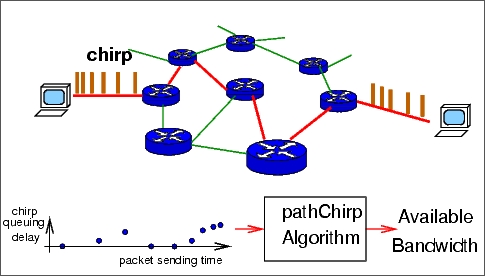
pathChirp is a new active probing tool for estimating the available bandwidth on a communication network path. Based on the concept of "self-induced congestion," pathChirp features an exponential flight pattern of probes we call a chirp. Packet chirps offer several significant advantages over current probing schemes based on packet pairs or packet trains. By rapidly increasing the probing rate within each chirp, pathChirp obtains a rich set of information from which to dynamically estimate the available bandwidth.
Another of our tools, STAB, is based on pathChirp and locates available bandwidth bottlenecks.